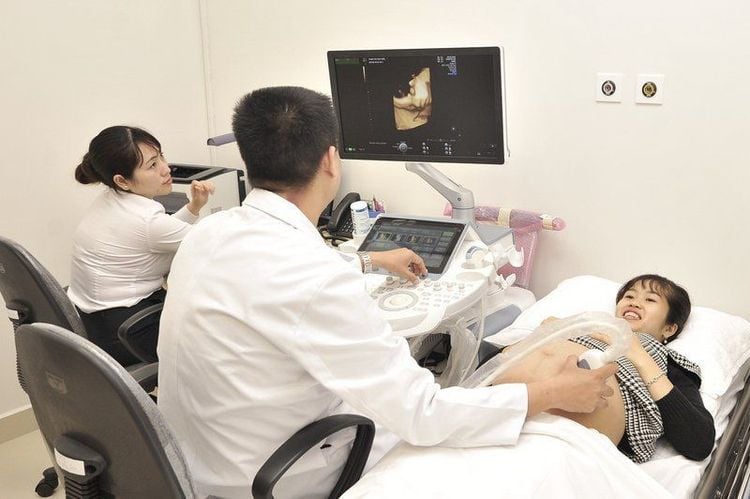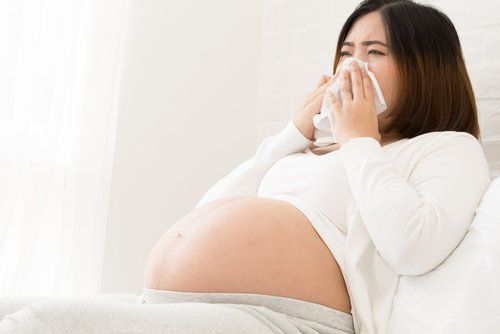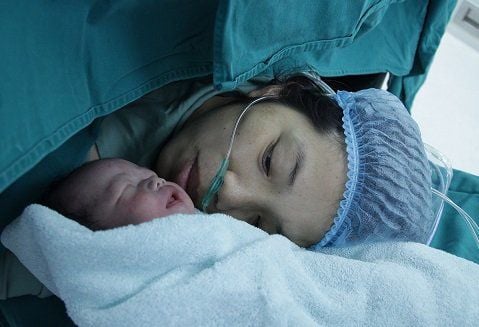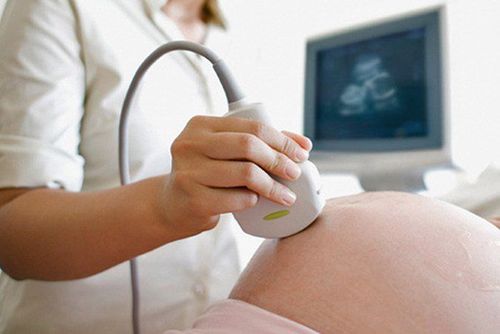This is an automatically translated article.
The article was professionally consulted by a Doctor of Obstetrics and Gynecology - Vinmec Central Park International General Hospital.
Uterine rupture is a very dangerous obstetric complication. If not detected and treated promptly, it can cause death for mother and fetus. Uterine rupture during pregnancy is less common than in labor.
1. What is uterine rupture in pregnancy?
Uterine rupture is a condition in which the uterus tears from the lining through the muscle layer. Uterine rupture includes 4 clinical forms:
1.1 Complete uterine rupture Complete uterine rupture is when the entire thickness of the uterine wall is torn (mucosa, muscle to peritoneum). The tear site is usually on the left and anterior aspect of the lower uterine segment, the tear can extend from the cervix to the uterine body. In complete uterine rupture: the fetus, the amniotic fluid is pushed into the mother's abdomen, so it is easy to get peritonitis.
1.2 Incomplete Uterine Rupture This form is also known as subperitoneal uterine rupture. Only the mucosal layer and muscle layer were torn, the lower peritoneum was detached but not torn. Blood does not flow into the mother's abdomen, but into the broad ligament, forming a hematoma in the broad ligament, the pelvis. In case of uterine rupture, the fetus is incomplete and the placenta is still in the uterus, so the fetus can be alive.
1.3 Uterine rupture in people with old surgical scars Usually caused by broken or partially cracked uterine scars, in this case the tear margins are not jagged and sometimes there is little bleeding.
1.4 Complicated Rupture Complications of a complex uterine rupture include complete uterine rupture with extensive lesions that may extend down the vagina, tearing of the sacrum, bladder, or rupture of the uterine artery. Due to complex injuries, patients are often severely shocked, so the management is difficult and the postoperative period is heavy.
2. Causes of uterine rupture in pregnancy
Uterine rupture during pregnancy can occur in pregnant women with old cesarean scar tissue due to:
Cesarean section in the uterine body.

Vỡ tử cung trong thai kỳ có thể xảy ra ở thai phụ có sẹo mổ cũ do mổ lấy thai ở thân tử cung
Sew up the ruptured uterus. Caesarean section for two or more times (scars of previous transverse surgery in the lower uterine segment, the more surgeries, the higher the risk of uterine rupture). Hysterectomy in the surgical treatment of horny ectopic pregnancy. Caesarean section with infection at the incision site or uterus. Uterine fibroid removal surgery (if uterine fibroids eat into the endometrium). Suture of uterine perforation after abortion. Accident, direct trauma.
3. Signs of uterine rupture in pregnancy
Uterine rupture in pregnancy can occur in the second and third trimesters of pregnancy but there are no signs of threatened uterine rupture.
3.1 Physical symptoms Pain occurs suddenly in the uterine region (usually at the site of the old incision). Bleeding in the vagina. 3.2 Systemic symptoms In some cases, the patient has signs of dizziness, pale facial skin, rapid breathing, shallow breathing, cold limbs, sweating, rapid pulse, low blood pressure, which can sometimes stop heart.
3.3 Physical symptoms Abdominal pain: pain can radiate throughout the abdomen, sometimes the peritoneal reaction is very obvious. The uterus is no longer in its original shape, the fetal parts can be palpated just below the abdominal wall, in case of incomplete uterine rupture, the uterus can be palpated but there is a sharp pain in the scar area of the uterus. Auscultation of fetal heart: The fetal heart is no longer audible. Abdominal percussion: The abdomen is completely opaque. Vaginal examination: The fetal position is not palpable, there is blood flowing along the hand. Note: There are cases where the old surgical scar is cracked, so there is no typical sign of internal bleeding as described above.
3.4 Subclinical Ultrasound, if the uterus is completely ruptured, in the abdomen there are: Fetal, fetal heart not beating, fluid. Laboratory: In the blood test, there is a decrease in the number of red blood cells, hemoglobin (Hb) and hematocrit (Hct). Red blood cells, Hb, Hct are greatly reduced in case of severe blood loss.
4. Prevention of uterine rupture during pregnancy
Prevention has a very important role to lower the rate of uterine rupture, the rate of death from uterine rupture.
During pregnancy: Regular antenatal check-up is required, early detection of risks of difficulty in childbirth such as narrow pelvis, distorted pelvis, old surgical scars on the uterus, large fetus, abnormal position... there is a possibility that surgery is not managed in difficult births and must be transferred to a higher level for management. Pregnant women with uterine scarring must be admitted to the hospital before labor for careful monitoring and timely intervention. If there are abnormal signs and there is abdominal pain or abnormal bleeding in the vagina, you should go to the doctor immediately to detect and promptly handle possible complications.

Cần khám thai thường xuyên đúng chỉ định trong thai kỳ để phát hiện sớm các vấn đề có thể gây vỡ tử cung
Uterine rupture is a very dangerous obstetric complication. If not detected and treated promptly, it can cause death for mother and fetus. Therefore, when there are risk factors for uterine rupture, pregnant women should be closely monitored by doctors.
Let Vinmec accompany mother and baby in the program "Maternity package". When buying the package, mother and baby will be monitored, ultrasound, routine testing at Vinmec International General Hospital during pregnancy until childbirth and after birth. With the support of modern equipment and a team of experienced, dedicated, attentive doctors, grasping and promptly handling health problems for mothers during the period, childbirth is sure to take place. It will definitely become more comfortable and light.
Please dial HOTLINE for more information or register for an appointment HERE. Download MyVinmec app to make appointments faster and to manage your bookings easily.













